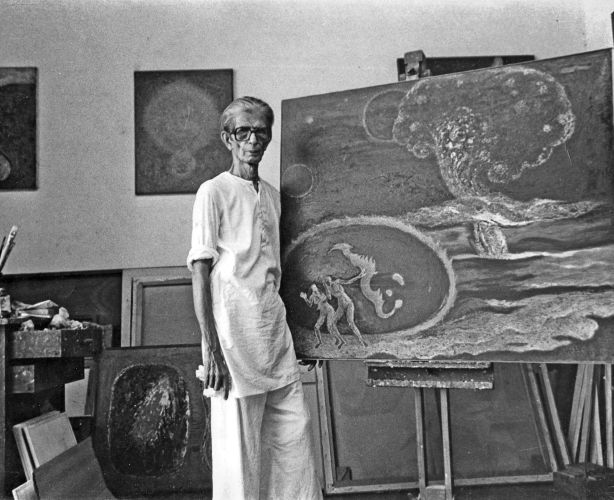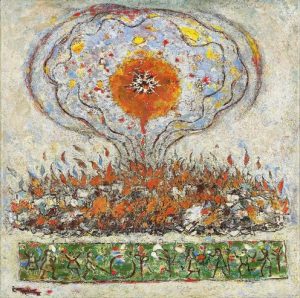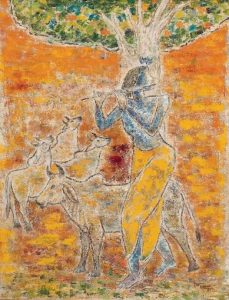Hebbar and the quiet power of figurative Indian modernism

Sneha Gautam
Each year, June 15 marks the birth anniversary of Kattingeri Krishna Hebbar, a quietly powerful yet deeply influential figure in the history of Modern Indian Art. In an era when many artists embraced abstraction to signal modernity, Hebbar remained committed to the human figure—choosing it not out of resistance, but as an intuitive and philosophical expression of empathy, rootedness, and social consciousness.
KK Hebber _ Life and Death
Born in 1911 in Udupi, Karnataka, Hebbar’s formative years were shaped by the visual traditions of temple murals, classical dance, and folk art. These early influences left a lasting imprint on his work, even as he pursued formal training at the Sir J. J. School of Art in Bombay and later in Europe. His exposure to Western art movements broadened his technique but never diluted his deep engagement with Indian themes. Instead, Hebbar built a unique language—simultaneously modern and deeply Indian.
A Figurative Modernist in a Sea of Abstraction
KK Hebbar’s art stood apart in post-independence India, a period when abstraction became the dominant visual idiom among many of his peers. Yet, his commitment to figurative work was not a retreat into tradition—it was a deliberate choice to explore the human condition with intimacy and relevance. His figures were rarely idealised. They were farmers, dancers, migrants, or victims of natural disasters—captured with a lyrical simplicity that conveyed both suffering and strength.
KK Hebbar _ Yakshagana
Through works like Tsunami, Drought, and Refugees, Hebbar transformed everyday experiences and national crises into deeply meditative artworks. He bore witness to the times he lived in, not through loud statements but through thoughtful compositions rendered with emotive line work and subdued palettes. His use of line, in particular, became a signature—fluid, confident, and expressive, often echoing classical Indian mural styles while aligning with modernist sensibilities.

KK Hebbar _ Untitled – Stroke & Structure.
Legacy and Relevance Today
KK Hebbar’s contributions extended beyond his own practice. As an educator and former chairman of the Lalit Kala Akademi, he shaped how generations of artists engaged with Indian modernism. His work has been featured in leading Indian and international collections, and continues to generate scholarly interest as well as collector demand. In recent years, auctions like those by AstaGuru have celebrated his work for its cultural importance and technical finesse.
KK Hebbar _ Untitled (Krishna The Divine Herdsman)
Today, as contemporary Indian art rediscovers figuration and questions of identity, Hebbar’s art offers a vital reference point. His ability to balance modern technique with rooted themes, and his unwavering focus on the human experience, resonate more than ever.
On his birth anniversary, we celebrate not only KK Hebbar’s artworks but his worldview—an artistic vision defined by integrity, introspection, and the quiet power of seeing humanity in all its depth.
Sneha Gautam is Senior Vice President at AstaGuru Auction House




